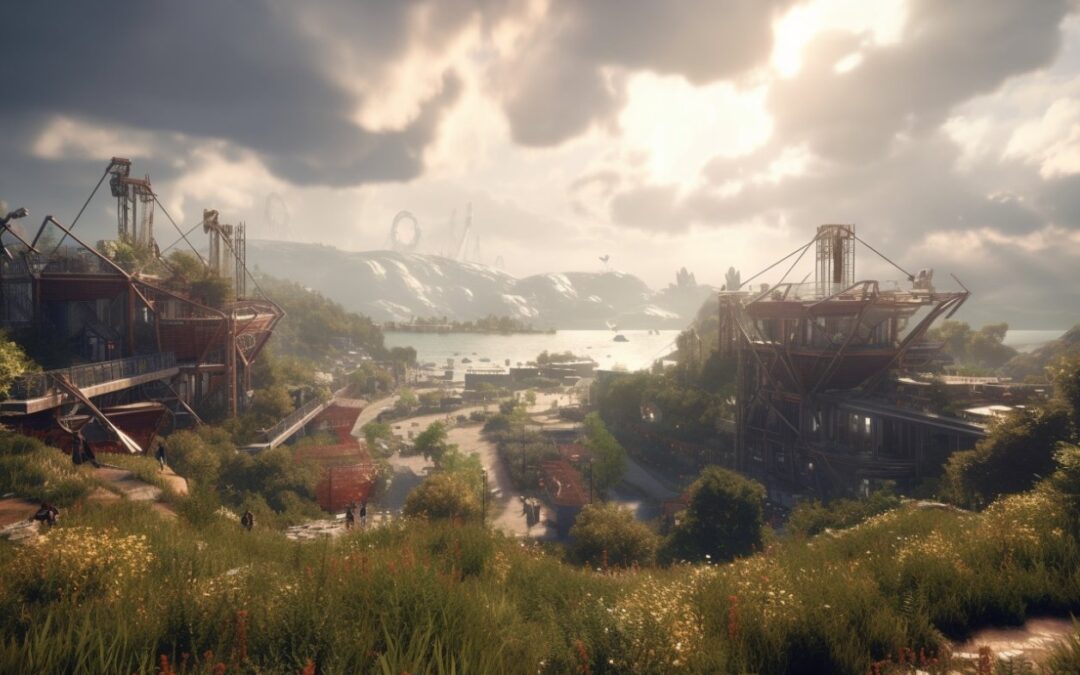What are the guiding principles for the future of remote work? We’ve spent the last two years just trying to figure out the mechanics of remote work and pushing back on the haters. Principles will evolve or be revealed with time, but I’ve borrowed a different framework that seems to apply. For me, the principles indicated that remote work is not a goal in and of itself. It is the first of many steps to reshape our world and how we live. Our future is going to look different, but it is firmly rooted in the remote past.
Many of the practices of remote work are taking us back about 300 years to a time before the office existed. Clearly, there were other problems at that time. But if you look at how things were organized for sustainability, add current technology, and you have a partial recipe to move forward. While the practices are fairly well documented in history, the principles go back much further in time.
3000-Year-Old Solution to Modern Problems
In my spare time, I love to visit ancient archaeological sites. the older the better. I’ve been to Stonehenge, the Acropolis, the pyramids at Giza, Chichen Itza, etc. When visiting isn’t always possible, YouTube has a variety of videos on the subject. So, when it suggested a TED Talk entitled 3000 Year Old Solution to Modern Problems, I couldn’t resist. And to my surprise, I discovered something I wasn’t expecting about remote work.
At the time this TED talk was recorded, Lyla June Johnson was a graduate student working on her Ph.D. Now Dr. Johnson, Lyla June is a Native American artist, musician, and historical ecologist. She takes a look back 3000 years to see how ecosystems were organized primarily in North America. Humans didn’t just settle in one place and grow as the population grew. They were active agents in managing growth, and the environment around them.
Humans and their systems tend to grow to the point of toxicity and then a change is forced. Babies in the womb could in theory stay there indefinitely, except things start to turn toxic as it gets closer to 9 months. Historically, some Amish communities would purposely divide every so often when the community reached a certain size. Other cultures have done similar things. Covid 19 itself didn’t break our systems. They were already broken. We have gotten away from many of the sustainable principles that have kept communities and companies in check in the past. The pandemic was just the straw that broke the camel’s back. Now it’s time to rediscover a path forward for work, and maybe even life itself.
Four Principles of Remote Work
Short of trying to recreate the eloquence of Lyla June’s talk, I would recommend taking the next 13 minutes and 27 seconds and watching her TED Talk. Welcome back! Lyla frames this in terms of land management techniques, but the principles seem to apply to communities and companies as well. I’ve reframed Jyla June’s focus a bit for this discussion, but I think it’s still valid. Here are her principles and how I see them applying to remote work.
Work with Nature
Just as Native American farmers would position their fields at the base of watersheds, Remote First companies are positioning themselves accordingly as well. By letting people work where they want they can attract a global workforce. If a company needs an actual office it can take advantage of tax benefits, natural resources, etc., and not have to worry about specific locations to be near workers. Just as Native American farmers were able to use this technique to cultivate the same land for centuries without fertilizer, being able to access and support a remote workforce provides a never-ending supply of talent.
Expand Habitat
“Why put plants and animals into farms and cages, when you can simply make a home for them and they come to you?”. This was the approach that many native cultures took. It sort of puts the office in context. We have been forcing people into an artificial structure for 300 years. Now we are finding we don’t need it. By creating systems that allow people to work where they want to be, you are creating a place for them. The prairie grasslands were ecosystems managed by fire, but most people think they were that way naturally. That’s the general idea. Work and life in general should evolve along natural lines, but it does need active participation on our part.
Decenter Humans
The lightbulb about remote work didn’t go off until Lyla June got to this point. Remote work is a non-human-centric system. It adapts to where the humans are but doesn’t force the humans to be in a particular place. By building ecosystems around where humans are, we build for sustainability and we avoid toxicity. In Jane Jacob’s classic book, The Death and Life of Great American Cities she chronicled the evolution of cities and how they often fail because they don’t adequately address the needs of the people that live there.
Jacobs had three core principles for city success that seem to apply similarly to companies: diversity and mixed-use (DEI), short blocks and pedestrian-friendly (Agile and cross-functional remote teams), and “eyes on the street” (ESG for transparency and accountability). By not forcing humans into central locations for efficiency, systems can operate more as they should.
Design for Perpetuity
Don’t just plan for the next quarter, plan for generations. Remote work doesn’t just help reduce our carbon footprint and give us back an extra hour or two in our day. It gives us a framework that is sustainable for generations. It’s probably no coincidence that at the same time, remote work is making a foothold, renewable energy, DEI, and ESG are all reframing our world. And we are also on the verge of being a multi-planet species. While these topics may not be leading remote work, they are closely linked.
Living Systems
Lyla June closes out her talk by reminding us that we are part of a living system. I believe that remote work is just one of many steps to rediscovering that. How we work and where we work is a reflection of how we live and where we live. Our bodies, work environments, communities, and even the planet are all systems. As we have seen, profit and loss are artificial constructs that can be easily undone by something as small as a virus. We need to start looking at things differently and we need to learn from the past. It’s the key to discovering our future.



